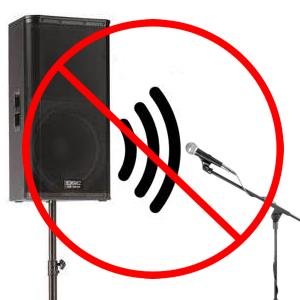Crafting Quality Sound for your Ceremony
To all my fellow celebrants out there - sound equipment can be so intimidating!! Luckily it’s not as complicated as it looks and I’m here to hold your hand through the process.
As a sound engineer I can take you through what you need and best practices for getting quality sound for your wedding. Of course, you can do everything right and the sound Gods might still want to F*** with you on the wedding day - that is ok just do your best! It happens to the best of us.
The Gear you Need:
Portable PA (“Public Address”) System
For a sound system, you will always need speakers and what we call a mixer (where you plug in the microphones and change their volume, add effects, etc). With a portable sound system, you get both of those pieces of gear in one! This is great for portability, simplicity AND affordability. This is a great one:
I’ll get into to the specifics of this piece of gear down below.
2. A Solid Microphone
A Shure SM58 is super reliable, sturdy and affordable. It is a “dynamic” mic which means it will work on any mixer system, and it has a “cardioid” pickup pattern which means it picks up sound in front of it but not behind. This is important for live sound because it can help you avoid feedback with the speakers.
A note on wireless…
Wireless mics are really sleek and sound great, they are just a little pricier and harder to troubleshoot if you’re having issues… I will have to dedicate a whole post on wireless mics!
3. One or Two Microphone cables
These are the cables that connect the microphone to the speaker. They are also knowns as XLR cables. It’d be good to get 2, 25 ft cables like these. I say 2 because you always want a backup cable in case one fails!
4. A Microphone Stand
Essential so you don’t need to hold your mic the whole time. I prefer a boom stand vs a straight stand. A boom stand can be situated to make room for your script or podium or whatever your setup is. Be sure to practice the adjustments before the wedding day - it can be stressful in front of an audience.
Let’s revisit the mixer on the PA system. Here’s what it all means:
Best Practices for Quality Ceremony Sound
To avoid feedback (that nasty noise when a microphone is fed into speakers and loops into a screeching hell) always place your microphone behind your speaker.
Our voices are mid frequencies so if people are having trouble hearing words you can lower the low frequencies and boost the mid frequencies (just the tiniest bit! If you boost too much you might put yourself in danger of feedback)
When speaking into a mic you want to get close! It’s better to position the microphone closer than boosting the gain too high. This can cause distortion and yet again feedback.
Prop the speaker on a table or something higher than the ground. That way the sound can travel to the guests in the back.
Be kind to yourself! Sometimes the acoustics of the ceremony space are just shit and you can just try your best and leave the rest!
These are the basics, please leave your comments and questions below! I’d love to have this be a dialogue. I still have a lot to learn as well :)






